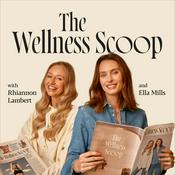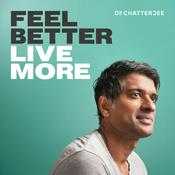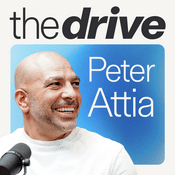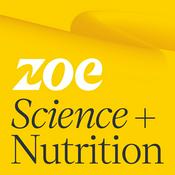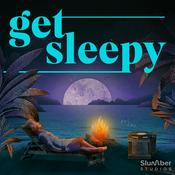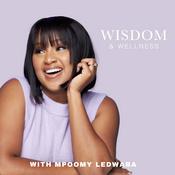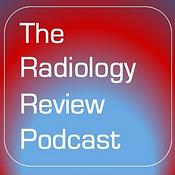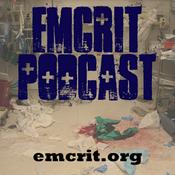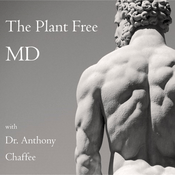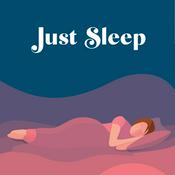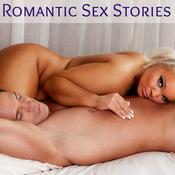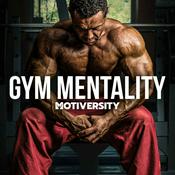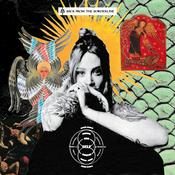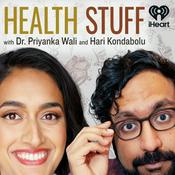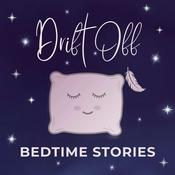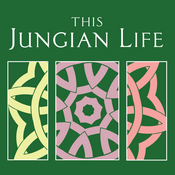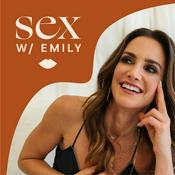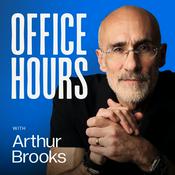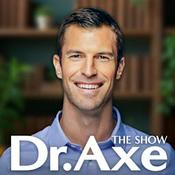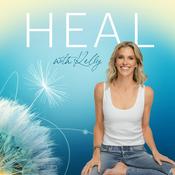419 episodes

Re-Run: Shoe features & new shoe recommendations with Matt Klein (Feb, 2022)
2026/1/04 | 57 mins.
Learn more about Brodie's Research Database & AI Assistant 📄🔍For MORE Run Smarter Resources 🏃♂️📚- Including Free Injury Prevention Courses 🩹🎓- The Run Smarter Book 📖- Access to Research Papers 📄🔍- & Ways to Work with Brodie 🤝👟👉 CLICK HERE! 🎉✨ Matt is a repeat guest from the Doctors of running and a running shoe fanatic!Our discussion on today's episode starts with shoe expiry dates. Matt gives his opinion on when it is time to buy new running shoes and what variables play a role in running shoe wear and tear.Next, we explore the different features of a shoe that you need to consider when buying a new pair. Matt discusses comfort, flexibility, stability, upper, drop, weight and many other features.Matt also shares his recommendations on shoe brands for beginner runners, performance-minded runners and his take on maximalist versus minimalist.Follow Matt's work by visiting the doctors of running website, youtube, podcast and insta.

Latest Research: Sleep Quality & Injury Risk, Marathon Injury Insights & Strength Training for Running Economy
2025/12/28 | 58 mins.
Learn more about Brodie's Research Database & AI Assistant 📄🔍For MORE Run Smarter Resources 🏃♂️📚- Including Free Injury Prevention Courses 🩹🎓- The Run Smarter Book 📖- Access to Research Papers 📄🔍- & Ways to Work with Brodie 🤝👟👉 CLICK HERE! 🎉✨ In this month’s Latest Running Research episode, Brodie breaks down three high-impact studies that every runner should know about—covering sleep quality and injury risk, what actually gets injured during marathon running, and how strength training can improve running economy. If your goals are to run faster, stay injury-free, and train smarter in 2025, this episode delivers clear, evidence-based insights without the fluff.We start with a standout prospective study tracking runners over six months, showing that poor sleep quality—not sleep quantity—significantly increases injury risk. Each one-point drop in perceived sleep quality increased injury risk by 36%, while rising fatigue and muscle soreness emerged as early warning signs in the 1–2 weeks before injury. The takeaway is clear: sleep quality, recovery monitoring, and subjective signals like soreness and fatigue deserve far more attention than most runners give them. Next, we zoom out and examine a comprehensive review of marathon-related injuries, separating race-day injuries from training injuries and identifying the most commonly affected areas (thigh, knee, calf, foot, and ankle). The paper highlights both modifiable risk factors (training load, recovery, alcohol use, footwear transitions) and non-modifiable risks (age, sex, prior injury), offering valuable context for runners preparing for longer events or returning from injury. Finally, the episode explores new research on strength training and running economy, focusing on how combining heavy resistance work with plyometrics (“complex training”) can meaningfully improve efficiency. The findings reinforce that strength training isn’t just for injury prevention—it directly improves how much energy you burn at a given pace, making it a powerful performance tool when programmed correctly.

How to Make 2026 Your Best Running Year
2025/12/21 | 39 mins.
Learn more about Brodie's Research Database & AI Assistant 📄🔍For MORE Run Smarter Resources 🏃♂️📚- Including Free Injury Prevention Courses 🩹🎓- The Run Smarter Book 📖- Access to Research Papers 📄🔍- & Ways to Work with Brodie 🤝👟👉 CLICK HERE! 🎉✨ In this reflective end-of-year episode, Brodie pulls back the curtain on his own training highs, mistakes, injuries, and breakthroughs to help you make 2026 your smartest running year yet. Drawing from a full year of HYROX preparation, calf and hamstring setbacks, strength gains, sleep struggles, and race-day lessons, he breaks down what actually worked, what didn’t, and—most importantly—why. This isn’t just about racing faster; it’s about learning how to adapt, manage load, avoid repeating injury cycles, and build resilience over the long term. Whether you’re training for a marathon, HYROX, or simply trying to stay consistent and injury-free, this episode will prompt honest self-reflection and give you practical ideas you can immediately apply to your own running journey

Exclusive AMA: Distance vs Time, Goal Setting, & Half Mara Taper
2025/12/14 | 29 mins.
Learn more about Brodie's Research Database & AI Assistant 📄🔍For MORE Run Smarter Resources 🏃♂️📚- Including Free Injury Prevention Courses 🩹🎓- The Run Smarter Book 📖- Access to Research Papers 📄🔍- & Ways to Work with Brodie 🤝👟👉 CLICK HERE! 🎉✨In this Ask Me Anything episode, Brodie answers three high-value listener questions on marathon prep, goal setting, and tapering. He breaks down when to prioritise distance vs time for long runs, how to structure challenging yet realistic running goals, and the key differences between tapering for a half marathon versus a full marathon. The discussion includes practical guidance drawn from coaching insights, research, and Brodie’s own clinical experience supporting runners around the world.Key Topics Covered1. Long Runs: Distance vs Time Brodie explains how to balance training plans that prescribe long distances with the reality of being on your feet for extended periods. He outlines the tipping point where diminishing returns can compromise recovery and how to use duration caps or split-day mileage to stay on track.2. Setting Challenging but Realistic Goals Using a structured process—including performance history, rate of improvement, race timelines, and A/B/C goal setting—Brodie shares a framework for developing goals that stretch you without leading to burnout. He also discusses staying true to your plan when friends’ ambitious goals don’t align with your needs.3. Tapering for Half vs Full Marathons Brodie breaks down how tapering differs across race distances, why marathon tapers commonly run two weeks while half-marathon tapers may require only a few days, and which variables should remain constant (like intensity) to keep your legs feeling springy and race-ready.TakeawaysCap long runs around 3–3.5 hours if distance pushes you excessively beyond that, to protect recovery.Use A/B/C goals and clear timelines to stay grounded and motivated.Tapering strategies must match the physiological demands of the race:Marathons require a longer, structured taper.Half marathons may only need a shorter, flexible taper period while maintaining intensity.Goal clarity, challenge, commitment, feedback, and simplicity are the pillars of effective goal design.

Turn Any Injury Into Long-Term Running Resilience (Brodie on the Strength Running Podcast)
2025/12/07 | 1h 5 mins.
Learn more about Brodie's Research Database & AI Assistant 📄🔍For MORE Run Smarter Resources 🏃♂️📚- Including Free Injury Prevention Courses 🩹🎓- The Run Smarter Book 📖- Access to Research Papers 📄🔍- & Ways to Work with Brodie 🤝👟👉 CLICK HERE! 🎉✨This episode is all about turning setbacks into strategy. Brodie joins the show to unpack why injuries are rarely random and how every niggle, flare-up, or full-blown setback carries valuable information about your training, lifestyle, and recovery habits. We explore the big levers that influence injury risk, including sleep, stress, nutrition, footwear changes, and emotional pressure, as well as the subtle patterns runners often miss. Brodie breaks down how to identify training errors, uncover weak links, and understand the early warning signs your body gives long before an injury fully appears.You’ll learn how to approach your running like an ongoing experiment, how to track the right data, and how to use self-awareness to build a more durable, resilient runner’s body. From understanding your personal injury patterns to applying smarter safeguards in your training plan, this conversation teaches you how to turn any injury into long-term progress. Whether you’re currently sidelined or simply want to avoid repeating past mistakes, this episode gives you the mindset and tools to come back stronger than before.Check out the Strength Running Podcast here
More Health & Wellness podcasts
Trending Health & Wellness podcasts
About The Run Smarter Podcast
Listen to The Run Smarter Podcast, The Mindset Mentor and many other podcasts from around the world with the radio.net app

Get the free radio.net app
- Stations and podcasts to bookmark
- Stream via Wi-Fi or Bluetooth
- Supports Carplay & Android Auto
- Many other app features
Get the free radio.net app
- Stations and podcasts to bookmark
- Stream via Wi-Fi or Bluetooth
- Supports Carplay & Android Auto
- Many other app features


The Run Smarter Podcast
download the app,
start listening.


